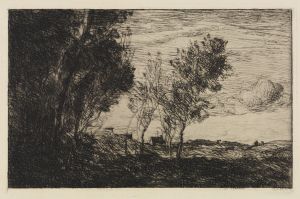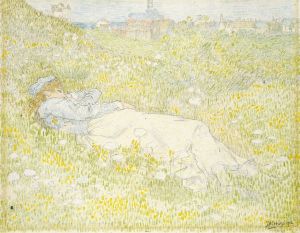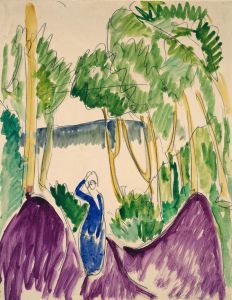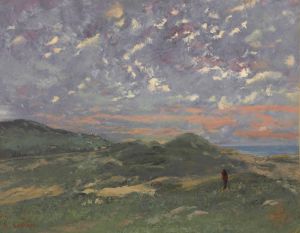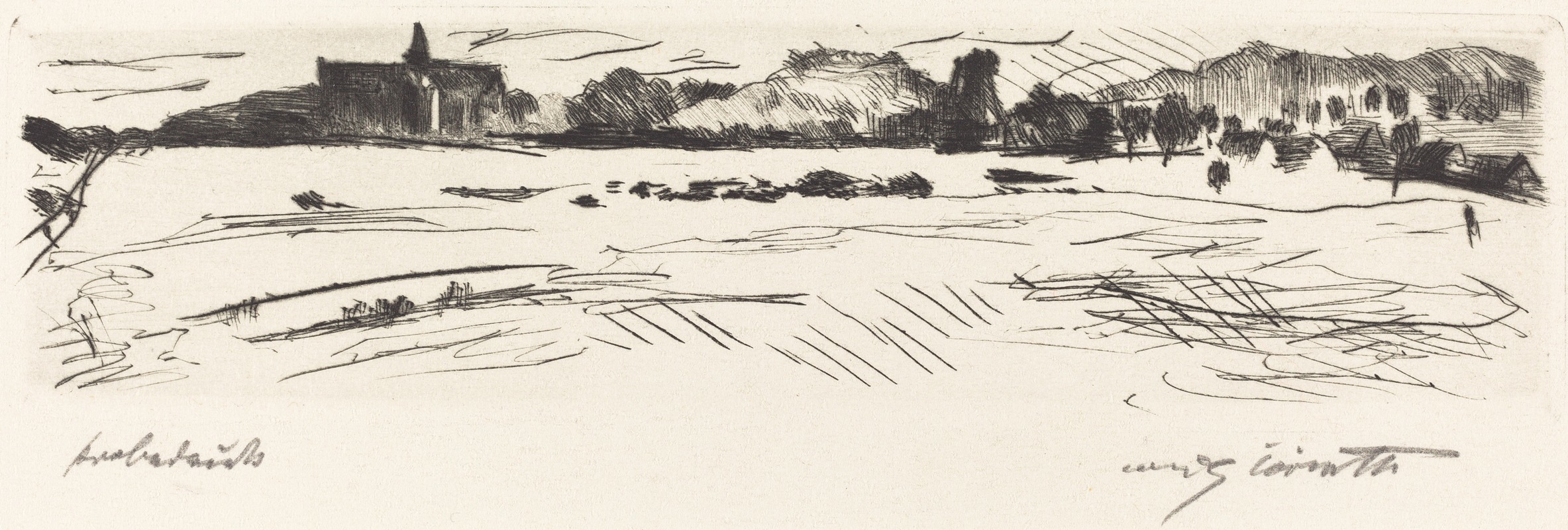
Landscape with Dunes
A hand-painted replica of Lovis Corinth’s masterpiece Landscape with Dunes, meticulously crafted by professional artists to capture the true essence of the original. Each piece is created with museum-quality canvas and rare mineral pigments, carefully painted by experienced artists with delicate brushstrokes and rich, layered colors to perfectly recreate the texture of the original artwork. Unlike machine-printed reproductions, this hand-painted version brings the painting to life, infused with the artist’s emotions and skill in every stroke. Whether for personal collection or home decoration, it instantly elevates the artistic atmosphere of any space.
Lovis Corinth was a prominent German painter and printmaker, known for his significant contributions to the transition from Impressionism to Expressionism in the late 19th and early 20th centuries. One of his works, "Landscape with Dunes," exemplifies his mastery in capturing the essence of nature through his unique artistic style.
"Landscape with Dunes" is a painting that reflects Corinth's fascination with natural landscapes, a theme that recurred throughout his career. Although specific details about the creation date and the exact location depicted in the painting are not widely documented, the work is characteristic of Corinth's landscape paintings from the early 20th century. During this period, Corinth often explored the interplay of light and shadow, using bold brushstrokes and vibrant colors to convey the dynamic and transient qualities of nature.
The painting likely features a scene from the northern German or Dutch coastal regions, areas known for their distinctive dune landscapes. Corinth's choice of subject matter aligns with his interest in capturing the raw and untamed beauty of nature, a common theme among artists of his time who were influenced by the Impressionist movement. The dunes in the painting are depicted with a sense of movement and vitality, suggesting the influence of wind and weather on the landscape.
Corinth's technique in "Landscape with Dunes" demonstrates his ability to blend elements of Impressionism with a more expressive approach. His use of color is particularly noteworthy; he employs a palette that captures the subtle variations in the sand, sky, and vegetation, creating a harmonious yet dynamic composition. The brushwork is loose and energetic, allowing the viewer to sense the immediacy of the scene and the artist's emotional response to the landscape.
Throughout his career, Lovis Corinth's work evolved significantly, especially after a stroke in 1911 that affected his physical abilities. This event marked a turning point in his style, leading to more expressive and sometimes darker themes in his later works. However, "Landscape with Dunes" likely predates this period, showcasing the artist's earlier style, which balanced impressionistic techniques with a burgeoning expressionist sensibility.
Corinth's landscapes, including "Landscape with Dunes," are celebrated for their ability to convey the artist's personal connection to nature. His works are housed in various collections worldwide, contributing to his legacy as a pivotal figure in the development of modern art in Germany. While "Landscape with Dunes" may not be as widely recognized as some of his other works, it remains an important piece within his oeuvre, illustrating his skill in capturing the ephemeral beauty of the natural world.
In summary, "Landscape with Dunes" by Lovis Corinth is a testament to the artist's ability to blend impressionistic and expressionistic elements, capturing the essence of nature with vitality and emotion. The painting reflects Corinth's deep appreciation for the natural landscape and his innovative approach to art during a transformative period in the history of modern painting.







